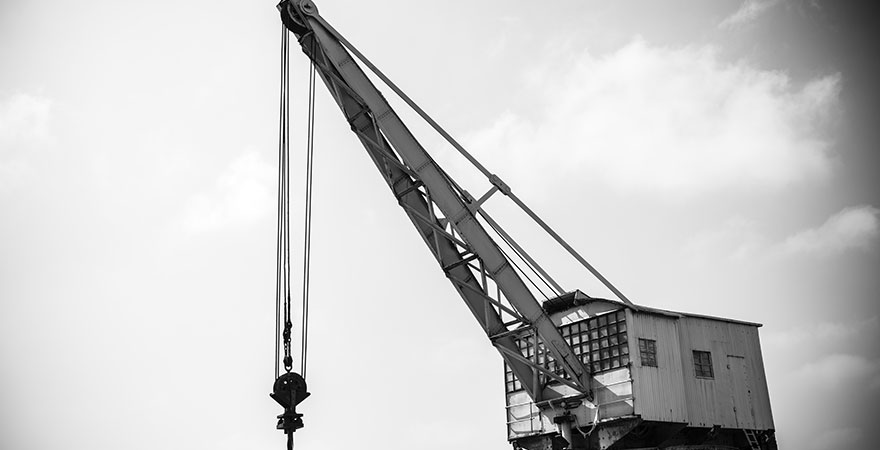History of The Crane: From Inventions to Improvements
A crane lifting device that has a winder, wire ropes and sheaves that are used for lighting, lowering and moving heavy materials horizontally. The mechanical lifting devices use simple machines to move huge loads that human being can’t move. Cranes are mostly used in the construction, transport and manufacturing industry for unloading and loading of items such as cars, raw materials, and assembly of heavy equipment. Cranes come in different forms and each is tailored for certain purposes. They range from small cranes used in workshops to the huge ones used in building high rise buildings, oil rigs and salvage sinking ships
History of cranes
According to archaeological records, cranes were invented in 515 B.C.E by the ancient Greeks. They were used to lift tongs and Lewis iron during the construction of the Greek temple. The presence of holes in the building is regarded as evidence for the existence of cranes.
Initially, there was widespread use of the winch and pulley which led to the replacement of ramps as mean of moving materials vertically. During this period the building blocks size reduced, and smaller stones were put to use. In building Parthenon the stones used were smaller and they no longer erected monolithic.
The exact date when they started using cranes is not known but changes in social and political factors in Greece which required the employment of small professional construction teams made the crane be more preferred than the more labor-intensive lifting materials
The cranes that were invented by the Greeks were powered by men or donkeys and mostly used in the construction of tall buildings. The cranes were later developed to use treadwheels which allowed for the lifting of heavier weights. Harbour cranes were introduced in the middle ages and were used to load and unload ships. The harbor cranes were also used during the construction of ships. Most of the earliest cranes were made from wood and later they were made from cast iron and steel during the industrial revolution
For a long time, the cranes were supplied with power from men and animals. However, that changed, and the earliest cranes were driven by steam engines. In the eighteenth to nineteenth-century steam engines were introduced with most still being in use in the 20th century. Later the modern cranes were made with an internal combustion engine or an electric motor with a hydraulic system to provide a higher lifting capacity than it was possible before.
History of Ancient Roman cranes
During the Roman empire, the Romans adopted the Greek crane because they had a lot of construction work. Based on the account of engineers by the name Vitruvius and Heron Alexandria the roman improved the Greek crane. One of the simplest cranes by the Romans was trispatos which had a single beam jib, winch and a block that had three pulleys. The main feature was that human beings could use the crane without exerting too much effort. Other crane types that were made by the Romans were the heavy cranes which had five pulleys, two to three masts depending on load. The Roman cranes had a better lifting capability as compared to the Greek cranes. The Romans have numerous old building and that indicates that they used multiple cranes to build. A building like the temple of Jupiter at Baalbek has architraves blocks that weigh about 60tons each and corner cornices with over 100tonnes each of which was raised to 19meters above the ground. The Roman engineers accomplished such heavy lifting by using multiple cranes.
History of Cranes in Europe
After the fall of the Roman Empire the middle ages the use of treadwheel cranes in western Europe. In the archives, the earliest treadwheel appears in 1225. In the seas, the earliest harbor cranes were in use in 1244 in Utrecht while in England the treadwheel was recorded in 1331.in those earlier days, cranes were used in harbours, mines and in building sites where the treadwheel crane had a major lifting role. The cranes were powered by windlasses that had radiating spokes and cranks.
Types of Cranes Available in Modern Day
Below some of the modern-day cranes
- Railway road Cranes
Railway road crane which has flanged wheels and they are used for maintenance work, a recovery operation, and loading.
- Mobile Cranes
A basic mobile crane consists of steel truss and telescopic boom mounted on a mobile platform. The platform may include rail, wheels such as trucks or caterpillar trucks.
- Telescopic Cranes
The crane has a boom which several tunes fitted on one side. They are mostly used for short-term construction projects, rescue jobs, and lifting boats.
- Tower Crane
This is a modern balance crane and mostly used in the construction of tall buildings
- Truck mounted cranes
The crane is mounted on a truck carrier which provides mobility. They are able to move from one street to another and that eliminates the need for special equipment to move the crane.
- Rough Terrain Crane
The crane is designed for rough terrain for pick and carry operations
- Crawler Crane
The crane is mounted on an undercarriage which has a set of tracks that provide stability and mobility of the crane. The main advantage of this crane is, it can move from one site to another with little setup.

